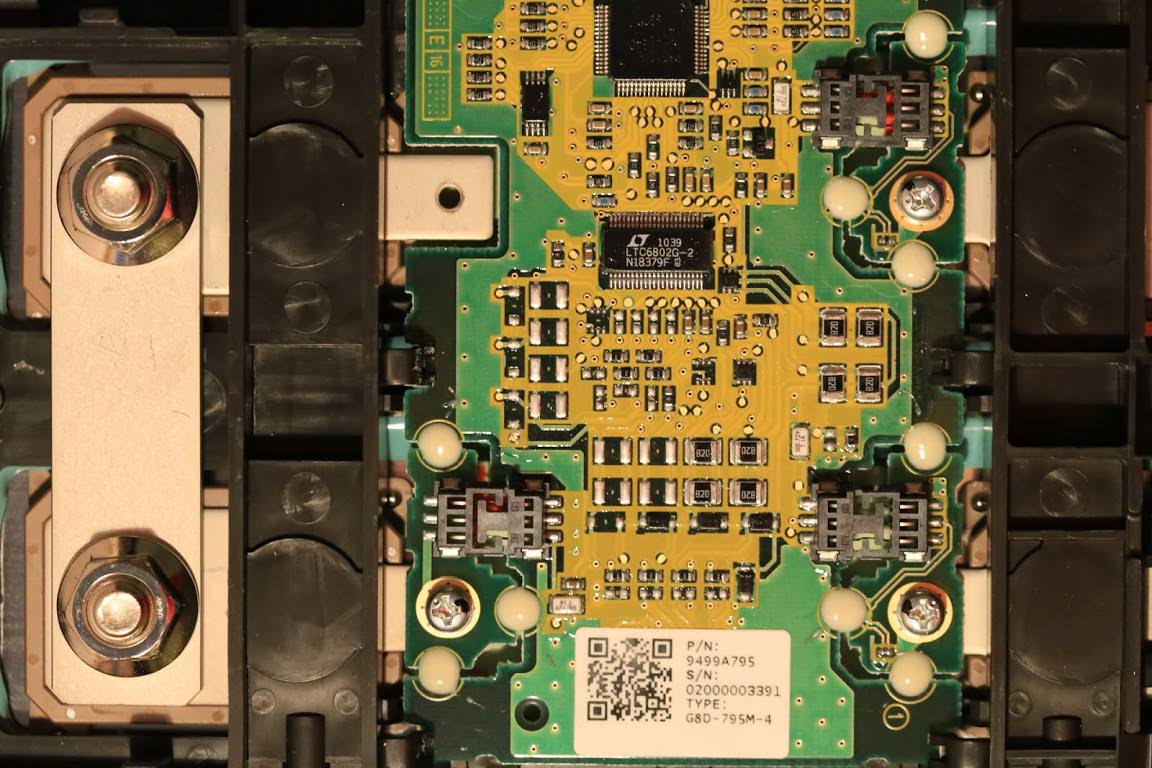Hi all,
I have a Peugeot iON - 2011 (66.000 km). I bought with 40.000km and I used 26.000 km without any problems. One day I could'nt charge my car, started the charging and flashed the ! icon on the dashboard and stopped the charge. My mechanic read out the OBDII and we got an error code in the 10th block F cell has low voltage. I checked the Volts and I saw every 2-3 seconds drops to under 2.5 V and goes back to the normal level and the charging is stopped. I can't charge the car. I got a new cell and we replaced it.
But now the problem is still. I used the canION app and I saw a some intresting data. The cell what we changed after charging in 3-6 seconds drop down suddenly the Volts number from 3,7 to 3,2 or sometimes 0,7 V and suddenly up to the normal Volts and after this repeat 3 times and the system block the charging. I attached the picture about the cells Volts under charging https://photos.app.goo.gl/yU6hRXbaEBlaJ6Ch1 and the other picture about the drops https://photos.app.goo.gl/08wmYf5UFC3qOQ2x2. I can’t charge. I tried start the car and under pressure also drop down the Volts in random on the number 74 cell.
And after I checked the Volts History and I found there sometimes the Volt up to 6,400 Volts and after goes back to 340 Volts. (picture about that: https://photos.app.goo.gl/hzSIrO3dZh3SzEKZ2) And the battery icon on the right is red and sometimes under charging change to full (green) and suddenly goes back to red. (actually charging is 14%)
First I thought this cell is wrong but we replaced it and still the problem. After the cell replacing the OBD error code is P1A5B
I think that is not cell problem, do you have any ideas? What is that?
Thank you.
I have a Peugeot iON - 2011 (66.000 km). I bought with 40.000km and I used 26.000 km without any problems. One day I could'nt charge my car, started the charging and flashed the ! icon on the dashboard and stopped the charge. My mechanic read out the OBDII and we got an error code in the 10th block F cell has low voltage. I checked the Volts and I saw every 2-3 seconds drops to under 2.5 V and goes back to the normal level and the charging is stopped. I can't charge the car. I got a new cell and we replaced it.
But now the problem is still. I used the canION app and I saw a some intresting data. The cell what we changed after charging in 3-6 seconds drop down suddenly the Volts number from 3,7 to 3,2 or sometimes 0,7 V and suddenly up to the normal Volts and after this repeat 3 times and the system block the charging. I attached the picture about the cells Volts under charging https://photos.app.goo.gl/yU6hRXbaEBlaJ6Ch1 and the other picture about the drops https://photos.app.goo.gl/08wmYf5UFC3qOQ2x2. I can’t charge. I tried start the car and under pressure also drop down the Volts in random on the number 74 cell.
And after I checked the Volts History and I found there sometimes the Volt up to 6,400 Volts and after goes back to 340 Volts. (picture about that: https://photos.app.goo.gl/hzSIrO3dZh3SzEKZ2) And the battery icon on the right is red and sometimes under charging change to full (green) and suddenly goes back to red. (actually charging is 14%)
First I thought this cell is wrong but we replaced it and still the problem. After the cell replacing the OBD error code is P1A5B
I think that is not cell problem, do you have any ideas? What is that?
Thank you.


































